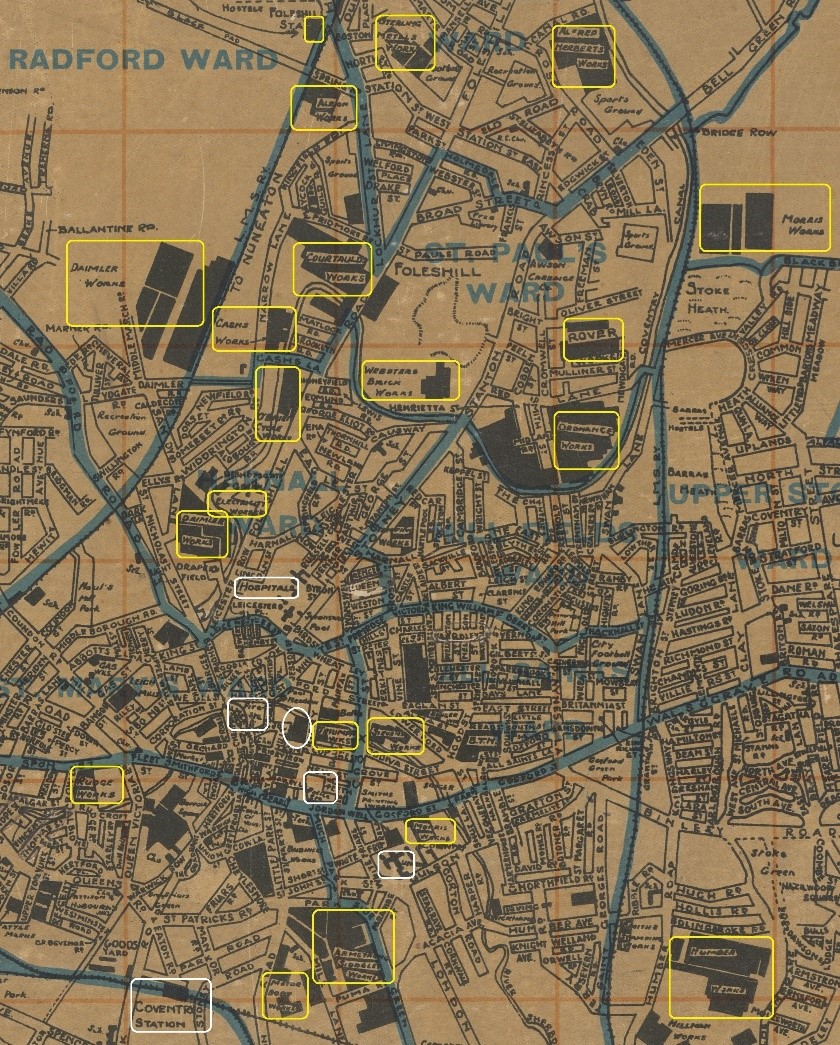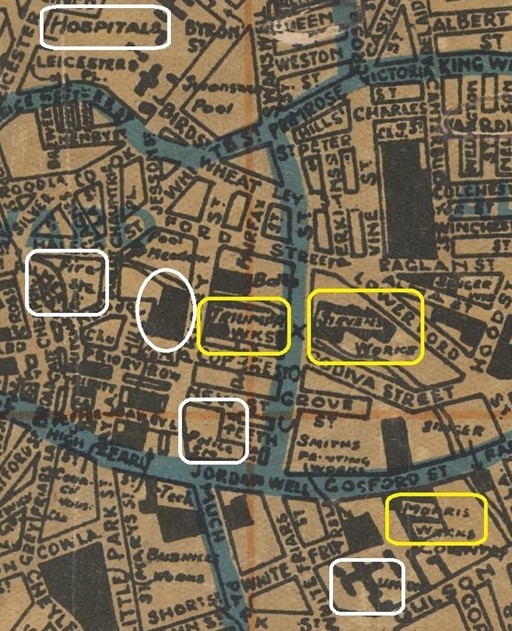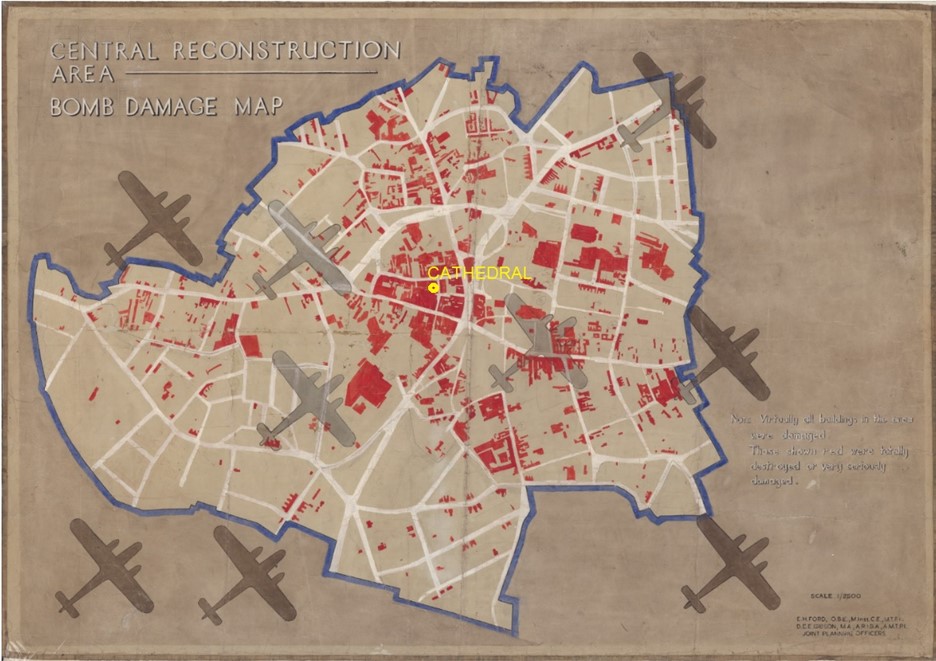Tales From The Archive: Coventry Blitz - Banding together in a Crisis
14 November 2020
Paramjit from Coventry Archives remembers the Blitz that devastated our city 80 years ago.
As I sit in the Coventry Archives, the ruins of the Old Cathedral are clear in view, evoking the remembrance of the Coventry Blitz during the Second World War (1939-1945). We now approach 80 years since the events of the 14th and 15th November 1940 bombing raids on the city. The operation was codenamed Moonlight Sonata by the Germans and left the city devastated. After diving into the Coventry Archives material, I would like to share some details from the events surrounding the November air raid to show how people banded together during the crisis.
The raid occurred on a clear and crisp night, with the city illuminated by the moon - this sounds rather picturesque under normal circumstances; however, it unfortunately allowed the German bombers to have full visibility of their target. The attack on the 14th lasted eleven hours, with 449 bombers reaching the city and dropping 500 tonnes of high explosives. Additionally, an estimated 30,000 incendiaries were dropped on the city. The severity of the attack came in continuous waves and was so concentrated that it completely destroyed the area.
Coventry was a strategic target for the Germans during the Second World War, and in the below map of the city from 1933 you can gain an understanding of its industrial importance. The major sites have been circled in white and the abundance of factories are circled in yellow.

These factories played a critical role in producing key materials for the war effort. Historian Gavin Mortimer specifies that Dunlop made gun parts and barrage balloons; Rolls Royce and Armstrong Siddeley were aircraft and automobile manufacturers; whilst Humber and Daimler made armoured vehicles. Mortimer also highlights the sometimes-forgotten textiles trade, reminding us that major companies Cash’s and Courtaulds both made parachutes for soldiers.2 The diversity of munitions production clearly made Coventry a significant target to the Germans.
You can note how dispersed these factories were around more residential areas of the city and, from a zoomed version of the map below, it is evident how unfortunately placed some of these factories were to key sites. In particular, the Police and Fire Stations, the Hospitals, and the Old Cathedral (Circled in white) are all in very close proximity to notable factories:

Specifically, the fate of the Cathedral at the heart of the city is well-documented by the Cathedral Provost Reverend Richard Thomas Howard. Certainly, potential damage was expected and precautions, such as removing the stained-glass windows, were conducted in advanced. The Provost also recollects that ‘buckets of sand and water, stirrup pumps, shovels, axes and crowbars’ were placed around the grounds and that ‘Cathedral guards’ were standing by to help. From a previous raid in October 1940, it was known that the main issue would be removing the lead roofing if an incendiary bomb set fire to the wooden oak structure beneath the slates.
On the night on 14th November, there were four men on-guard at St Michael’s Cathedral: Mr Forbes, Mr Eaton, Mr White, and the Provost. The men assembled at 7.00pm and bombs began to fall by 7.30pm, with the first incendiary striking the Cathedral at 7.40pm. One bomb fell through the roof and another landed between the pews. However, the most alarming strike was above the organ and, as feared, ‘had fallen through the lead and was blazing on the oak ceiling below’. It took all four men to control the fire.
Whilst the Cathedral guards were able to put out several fires during the evening, another shower of bombs landed on the roof of the building and set it ablaze. The Provost writes: ‘with the failing of our supplies of sand, water, and physical strength, we were unable to make an impression; the fire gained strength, and ultimately we had to give in’.
Additionally, Canon Graham Clitheroe of Holy Trinity Church, which is situated near to St Michael’s Cathedral, also documented his account of the raid. He states that when he saw the bombs falling on the Cathedral that wished that he ‘could give aid’ but that two guards ‘was the minimum necessary’ to protect Holy Trinity. Instead he took comfort in the fact they had a strong guard at the Cathedral with individuals who knew the building well. Clitheroe, much like the Provost, sadly notes the moment when ‘the flames appeared to spread, and it became evident to us that they would soon be out of control’ at the Cathedral.
It must have been a frightful scramble for the guards within the Cathedral as they did their best to save treasures from the burning building. The Coventry Fire Brigade had logged over 240 fires by 8.00pm from around the city, including in the Cathedral. However, due to this demand and the additional damage to communication lines, help in the form of Solihull Fire Brigade did not reach the Cathedral until 9.30pm. Yet even this could not save the building as damage of hydrant water sources around the city centre meant that water failed to pump through the hoses.
It came to the point when the firemen saw that nothing more could be done for the Cathedral. The Provost stayed in the police station, watching between 11.00pm and 1.30am as the Cathedral roof collapsed and the steel girder twisted and buckled from the intense heat. Clitheroe reflects that ‘it was a hateful sight to watch this glorious edifice being eaten up by the fire of the enemy bombs – hateful as it was senseless’. The Provost solemnly noted that the Cathedral burnt throughout the night along with the rest of Coventry, serving as an ‘emblem of the eternal truth that when men suffer, God suffers with them’.

By the dawn of 15th November, it was a different city, darkened by ash and smoke and by the weight of the events from the night before. Clitheroe very earnestly accounts the feeling of Coventrians which followed. He writes: ‘After a time I became conscious of a presence as I walked through the blasted areas of the City – a presence mysterious and hateful. It seemed to hover over one and be within as well as outside. Presently I found that other people felt this. It was the ghost of gloom and depression’.
But Clitheroe also states how the Church strove to rise above such feelings and he continued to offer aid to his parishioners. It is evident that he was not alone in responding with quick and unwavering support. Early in the morning a message was sent out by the Air Raid Precautions Controller saying, ‘Feed the people. Give them hot drinks, rich and poor alike, it is the only way to steady them.’ This message was picked up by the Women’s Voluntary Service (WVS) who helped serve food to the people of Coventry. Mobile canteens flocked to Coventry, arriving at 9am on the 15th November, and successfully fed emergency aid workers and the general public in rest centres, shelters and in the streets. By 4pm they had established a rota of 20 people cutting bread for sandwiches and providing tea and soup. Moreover, they did this for 8 days free of charge.
Once official communal feeding centres were set up the mobile canteens were withdrawn. Pearl M. Hyde, Commandant of the WVS, stated that one facility had a seating capacity of 350 and supplied 500-600 breakfasts, as well as morning snacks, and 2,000 hot meals at midday. These services were indeed vital for calming the residence.
For a while after the initial raid it was describing as feeling ‘like being bombed and buried as well’. Despite this feeling of isolation, especially due to lost communications to the city, it was evident that Coventry was not forgotten. Aid poured in from around the world giving financial support. Also, King George VI visited the city, reinstating morale as he shared empathetic conversation as well as a solemn minutes’ silences with the residence of Coventry.
A final notable comment again comes from Clitheroe, who stated that people did not complain at their misfortune but rather he marvels at ‘how closely knit together we became, and how real our sense of common human relationship!’. Furthermore, he describes that ‘for the first time in my experience I seemed to be living in a world in which selfishness has disappeared. And it was very lovely’. Thus, rather than choosing defeat, the people of Coventry chose one another, and in the ruins of the city they said, ‘we shall build again’.
Please access Coventry Archives for more information about Coventry in the Second World War
Sources
Books: Tim Lewis, Moonlight Sonata; David McGrory, Coventry’s Blitz; Gavin Mortimer, The Blitz.
Archive items: Canon G.W. Clitheroe, ‘The Story of the Great Raid’ (pamphlets JN940.544); Provost Account, ‘The Story of the Destruction of Coventry Cathedral November 1940’ (Archive Store PA 2072/1/7); E Castle, ‘The City Under Fire’ (Archive Store CCE/8/1/1/208); Pearl Hyde, ‘Emergency Feeding After the Air-Raid 14-15th November 1940’ (Archive Store PA 2684/1/3/17); Coventry 1933 H.A. Smith Map; Coventry Ford-Gibson Bombers Map.